In today’s fast-paced and highly competitive digital era, businesses are constantly looking for ways to improve their user experience and gain a competitive edge. One of the most effective ways to do this is by implementing an in app feedback widget.
This type of platforms allows businesses to collect valuable feedback from their users and use it to make informed decisions about how to improve the app and enhance the user experience. In this article, we will explore the benefits of using an in app feedback widget, specifically focusing on Feedier and its features. We will examine how this type of tool can help businesses build stronger customer relationships, increase engagement, and ultimately create a better user experience.
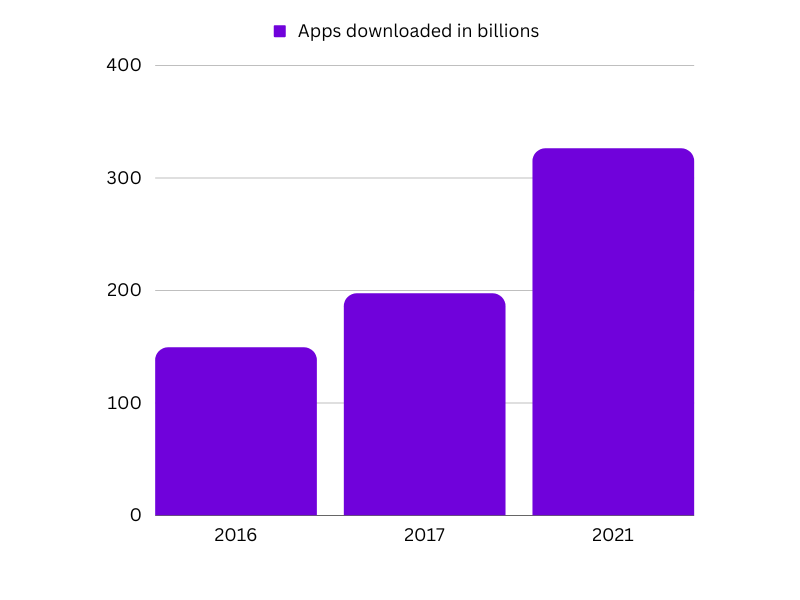
Applications are omnipresent these days, Android, iOS, the battle is on. We use apps for everything from teaching us how to meditate on determining the best way to split a group bill at a restaurant.
But with so much competition, it can be hard for those developers to make their apps stand out.
In a world where modern apps are overflowing with features and customizations and updated almost daily, providing a positive user experience is paramount to success.
There are, of course, a number of methods that can be used to evaluate whether your user’s needs are being met but one of the best ways is by using in-app feedback.
This helps make sure that your time and effort is spent effectively in developing your app the right way by analyzing your customers’ satisfaction as they’re using the application.
This can be easily done by incorporating a platform that gives you the option to collect in-app feedback and run a short customer satisfaction survey.
It could be as simple as asking an NPS question to get a rough indication of how your users are feeling.
Who is In-App Feedback for?
According to a report from User Testing, 81 percent of the executives surveyed said user research helps make their company more efficient.
A further 86 percent said that user research improves the condition of their products and services.
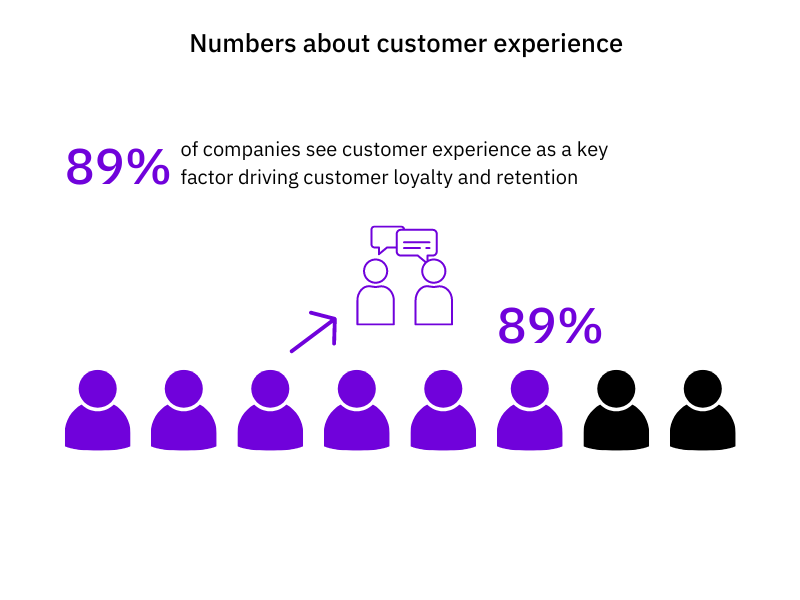
Another study demonstrated that 89 percent of companies see customer experience as a driving force in motivating customer loyalty and retention.
That means that everyone who owns a company, offers a service, or creates an app should be concerned with analyzing user experience and collecting real-time feedback.
To make an app that stands out, it needs to be customer-centric and to make it customer-centric, you need to know what those customers think.
With in-app feedback, product people are able to better understand a customer’s viewpoint concerning a business or brand.
Customer-Success are able to understand what indicators lead to churn. And Sales & Marketing are able to work out what’s the most important aspects to feature.
This allows businesses to:
- Increase the adoption and/or popularity of the platform/product/service
- Create new features or make improvements to existing ones to improve customer experience
- Provide better customer support
Why should you Collect In-App Feedback?
You have decided to collect feedback. Great.
You’re not convinced yet? (you should be)
Let me give you a few reasons why it should be at the top of your agenda.
But before, to really understand the importance of feedback and listening to the voice of customer, we suggest you to watch this video :
1. Avoid abandonment
90 % of all downloaded applications are only used once before eventually being deleted by users.
To prevent this abandonment, most designers will use something called an onboarding process. Essentially, a tutorial.
It’s a way of getting users better acquainted with your application. It teaches them how to complete tasks and properly engage with the app in the most efficient way possible.
This onboarding process is a great opportunity to get to know your users. To find out what problems they regularly encounter or what steps are difficult to understand.
With that data, developers can take steps to eliminate those bottlenecks and smooth out the operating process.
Most developers will use activity-based feedback to collect this type of data.
That means that if the user stops the onboarding process, you can ask them why.
Or, once completed, you can ask them about their overall experience. This is a very simple, yet effective form of feedback.
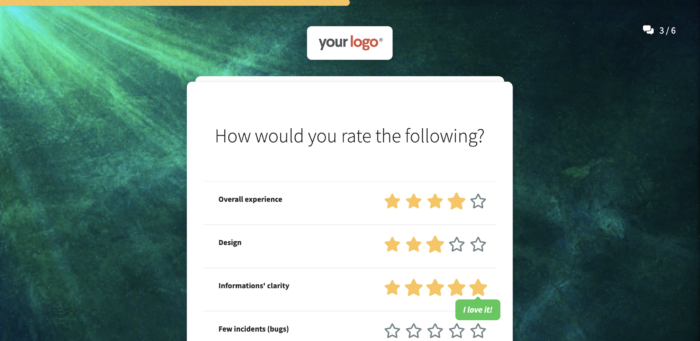
2. Plan your future
Most companies know exactly what they want to do with their apps.
They’ve fretted over the minutiae of every new feature and agonized over every update.
It’s exciting to finally send your product out into the world, after all!
But this is usually a mistake.
Many developers and companies will get ahead of themselves, rolling out batches of new features in a single update.
This can be overwhelming for users and hurt their overall experience. A better strategy is to start slowly, with individual updates, and test as you go.

The insights gleaned from your in-app feedback will be indispensable when it comes to determining which features to roll out next.
You can see which aspects of the app are highly valued by users and which ones they don’t care for.
Using the contextual information you have on the user, you’ll then be able to segment the information into cohorts using your feedback platform, providing deeper analysis and better understanding of why your users are acting the way they are.
The information can be used to help you prioritize your product roadmap.
This can help you refine your onboarding process and design for optimal flow.
The ever-popular upvote is another way to see if people are engaged with your products and services.

Whilst it can be useful, it doesn’t help you segment the priorities of your top paying customers against the customers who provide least value.
These insights can allow you to create marketing personas.
3. Better engage with your customers
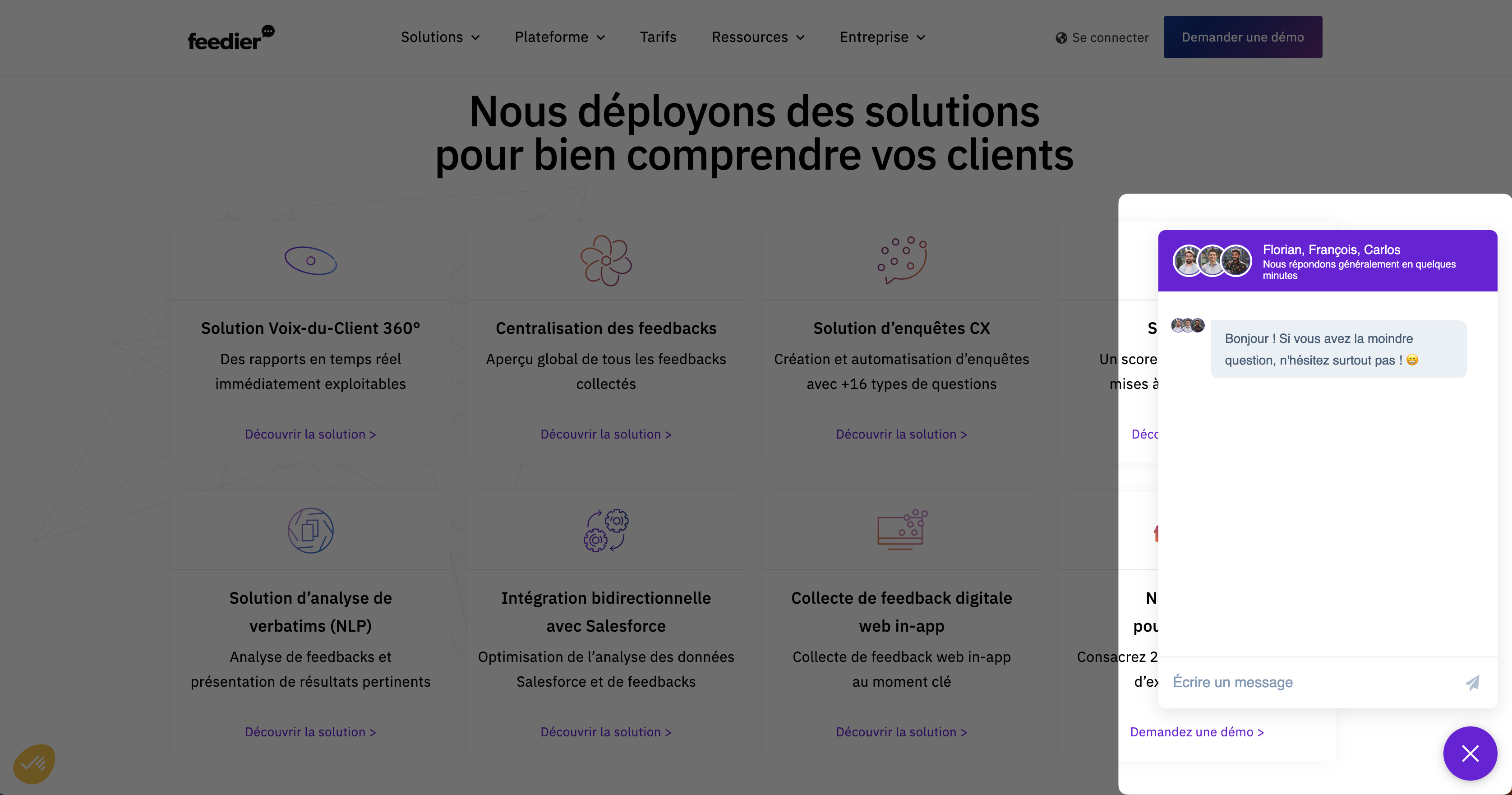
In the business world of today, where competition is high, it is important for companies to keep close ties with their customers. One of the best ways to do this is to ask customers what they think at key points in their journey.
The feedier widget is a useful tool that lets companies do just that. Feedier helps businesses learn about their customers’ experiences by giving them a simple, easy-to-use way to give feedback at key points, like after a purchase or when a customer contacts support.
This feedback can then be used to make better decisions and make changes that lead to better quality and more feedback, which leads to a customer base that is stronger and more involved. As a result, any company that wants to improve customer engagement and build long-term ties with their customers needs to use the feedier widget.
The feedier in-app feedback widget can be set to show up at certain points in a customer’s journey, like when they visit a certain page on a website or buy a certain product. This level of customization makes it possible for businesses to get feedback that fits their needs and goals.
For example, a company might ask customers who just bought something what they thought so they can figure out how to improve the buying process and make customers happier. They could also ask customers who have been to a certain page what they thought about it to learn more about their hobbies and preferences.
By using the feedier widget to collect feedback in these specific ways, businesses can learn more about their customers’ experiences and use that information to make their customers more engaged and build better relationships.
The feedier widget is made to be GDPR-compliant, which means that it doesn’t take personal information from people who are just looking around a website. The widget only shows up when a customer does something with it, like buy something or call support.
Also, the widget is made to collect feedback anonymously, so customers can give honest feedback without worrying that they will be found out or that their personal information will be stolen. By making sure that the feedier widget is GDPR-compliant and protects customer data, companies can build trust and show that they care about doing business in an honest way. This can make customers more loyal and build better long-term relationships.
4. Save money
Building an app is not a cheap undertaking.
A number of factors, including the platform, functionality, design, development, and your overall business model, will impact the exact cost.
However, creating a proprietary application has proven time and time again to be an expensive endeavor.
In addition, altering existing features or adding new ones can also be costly, especially if these changes are informed solely by instinct.
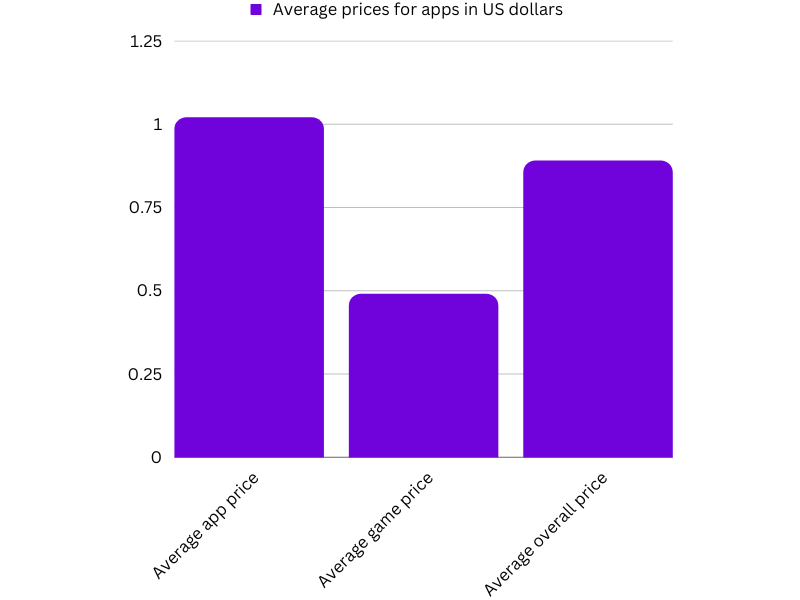
Instead, collecting feedback from customers – those who have already experienced the app for themselves – will help you make meaningful changes and avoid spending unnecessary money.
In-app feedback won’t only give you greater insights into the user experience, it can also help provide granular information about your users.
5. Monitor In-App performance
Monitoring your app’s performance consistently is critical to your success. Especially if you’re launching new features or are ramping up towards a big update.
Things are going to go wrong, it’s nearly inevitable. But the longer it takes to fix those things the more likely you are to scare users away from your brand.
The Lean Startup methodology was popularized by entrepreneur Eric Ries. It’s a way to develop businesses or products quickly and efficiently in order to discover whether they’re economically viable.
One of the central tenants of the methodology is based around a short cycle of customer feedback and improvement.
By doing this, you can be constantly testing how your app performs and make any changes necessary to improve the performance and overall user experience.
This feedback can be tracked in real-time using your defined stories, so you can see filtered feedback immediately as soon as a user has submitted their thoughts.
How do you get User Feedback effectively?
Collecting user-feedback is anything but easy. Let me give you the actionable steps to take, and where to look for the right tool.
In-App Feedback methodology
It’s great to know exactly why we should be collecting in-app feedback from our users. But how do we go about doing it?
There are a number of tips we can consider when laying out our strategy. Do we want to improve a specific feature? Offer better onboarding? Or improve our conversion rate?
One of the more effective ways is the Customer Satisfaction Score (CSAT). So, for example, you can ask the customer to rate their overall satisfaction with the service you’ve provided.
Then give them the following scale to respond:
- Very unsatisfied
- Unsatisfied
- Neutral
- Satisfied
- Very Satisfied
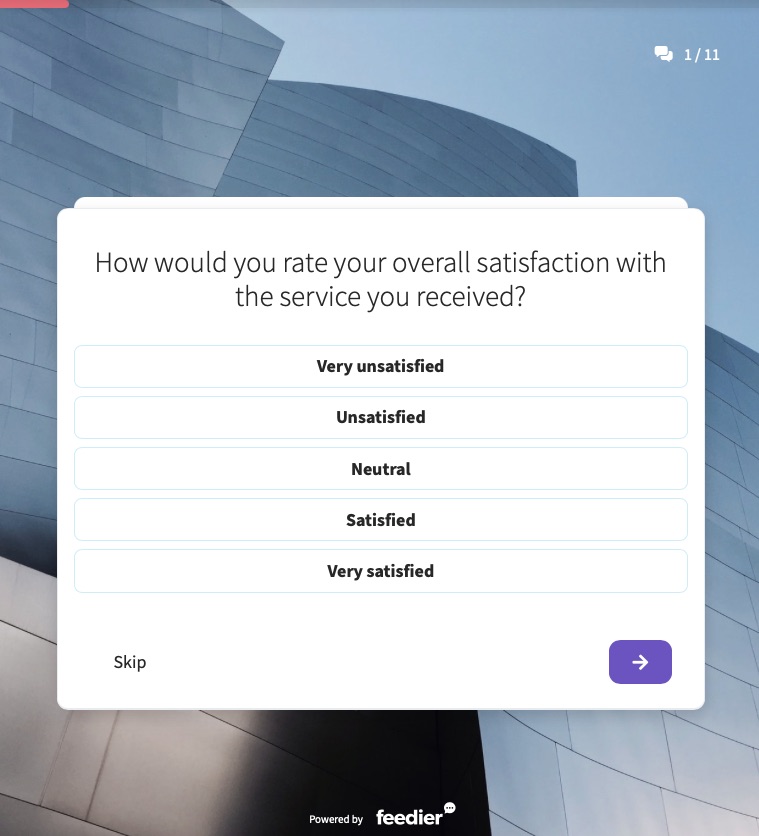
To calculate your CSAT score, you need to divide the total number of people who answered the survey by the number of 4 and 5 responses. Research has shown that using the two highest values on feedback surveys is the most accurate predictor for customer retention.
Your feedback management platform has the ability to show you averages and provide a better breakdown of these results.
Another crucial metric is the Net Promoter Score (NPS), which measures the satisfaction and loyalty of your customers. The automated platform requests respondents to rate how likely they would recommend the product or company to a friend or colleague on a scale of one to ten. To calculate the score, the platform categorizes the respondents and subtracts the number of detractors from the number of promoters.
By using this platform, the entire process is automated, eliminating the need for manual calculations and saving time and effort.
In-App Feedback tools
There are a number of in-app feedback tools on the market to help developers dig into this information
Feedier
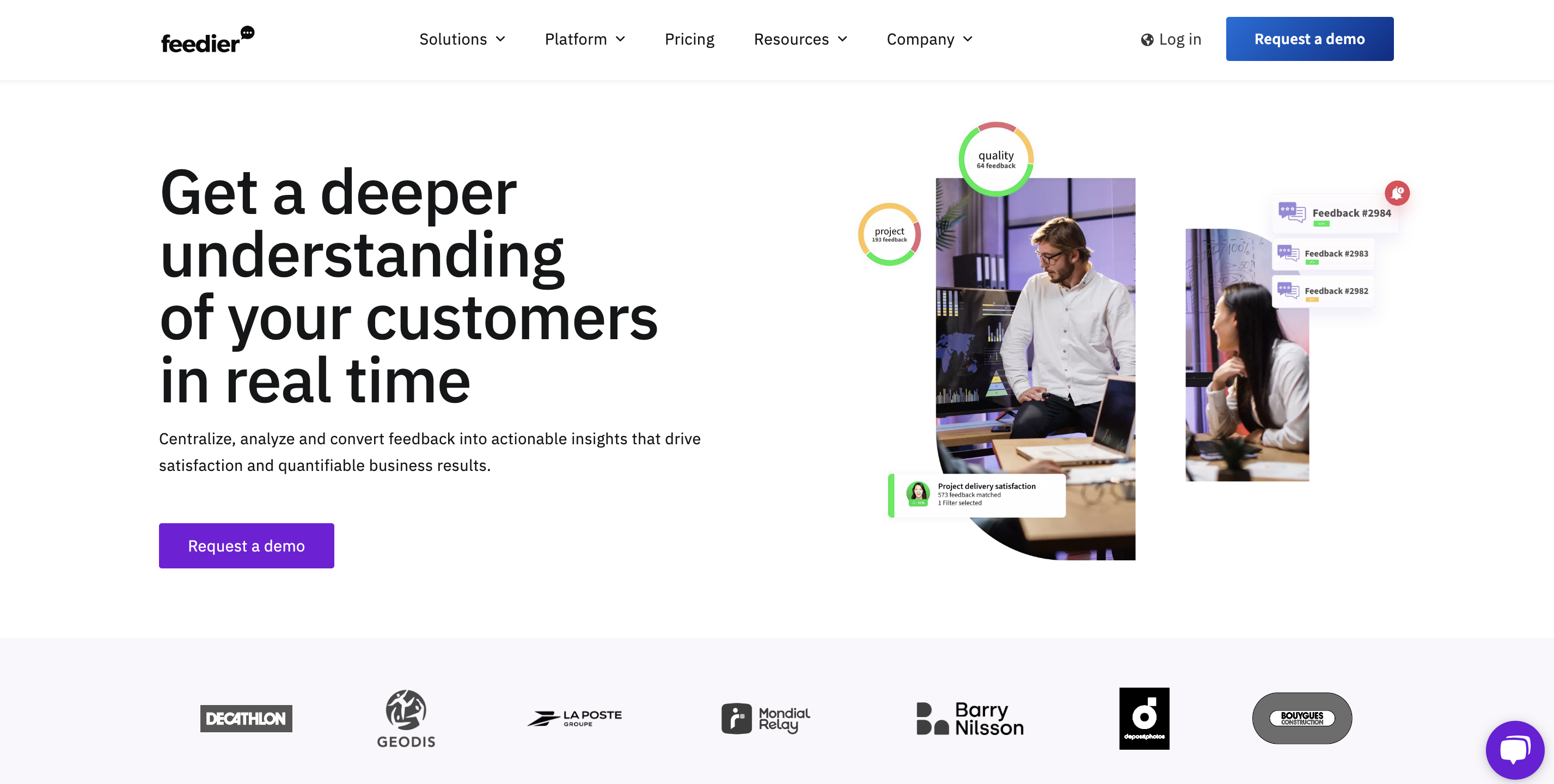
Feedier is not only designed to help collect attractive and visual feedback, but also to make it easier for you to understand your feedback.
You can collect and organise feedback from multiple companies (including Feedier!) then receive easy-to-understand insights that match your KPIs. Build personas of your users through the User Stories, create presentation-ready PDF reports displaying the CSAT questions that matter to you, and involve different departments into the feedback process by sending live-alerts based on the feedback that comes in.
A user reports a bug? The Dev team receives feedback straight to their Slack channel, and the Product team is notified via email when a user has a product suggestion. This active voice emphasizes the actions being taken, making the sentence more concise and straightforward.
Apptentive
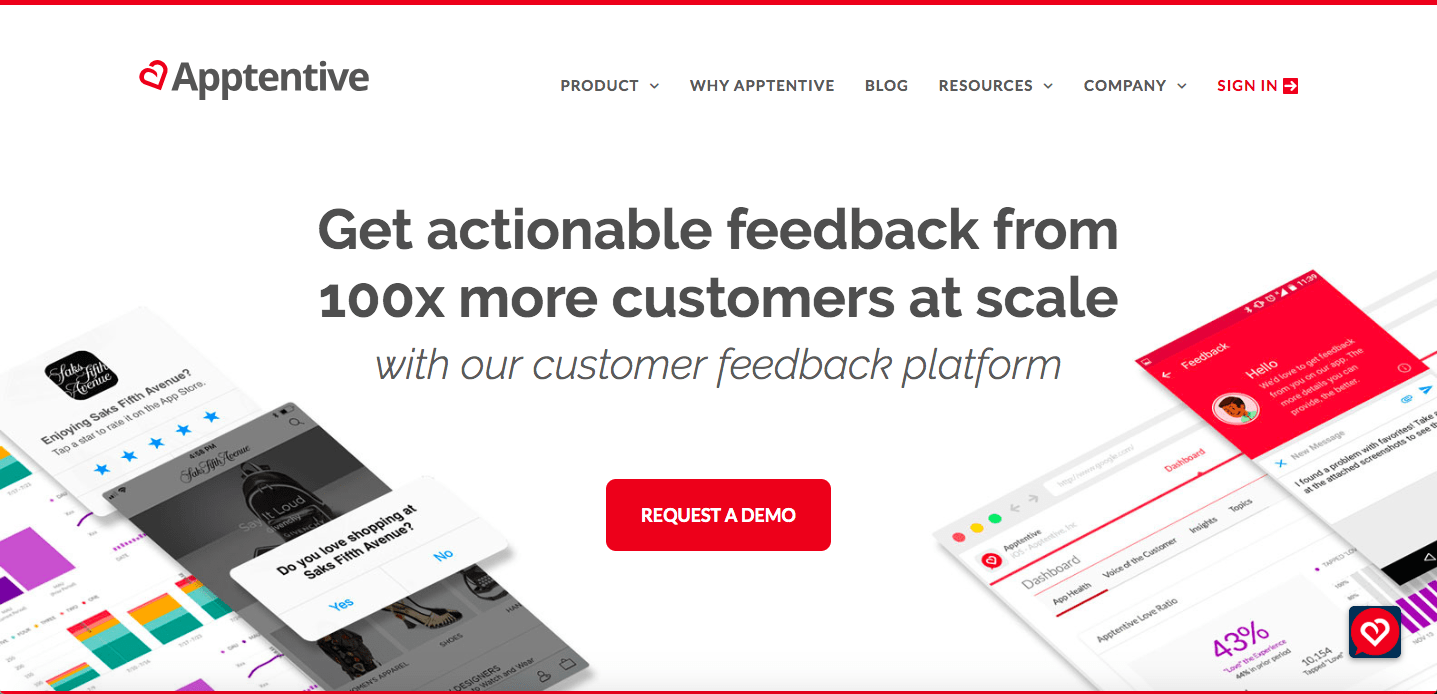
This service company aims to help brands identify who they’re talking to, engage various customer segments, and help motivate customers to take action through in-app messages, surveys, and prompts.
Instabug

Instabug performs dual duties as an in-app user feedback tool and an instant bug-reporting platform. Using Instabug, you can send custom-targeted and timed user surveys as well as manage in-app conversations with your users.
Summing it up
The reasons to collect in-app feedback are abundant. The information allows you to engage with your customers, hone your products or services, refine your strategy, and hold on to your users.
After all, user experience has proven integral to improving the bottom line.
A recen Forrester Research study showed that an improved UX design can bring conversion rates of up to 400 percent.
That means that just by smoothing out some of the wrinkles in your app, you could begin to see your sales numbers climb.
The most obvious and cost-effective way to accomplish this is through in-app feedback tools.
These tools help us save time, money, and create more sustainable applications. The type that users love, promote online, and share with their friends and families. These are the type of applications that keep people coming back.








